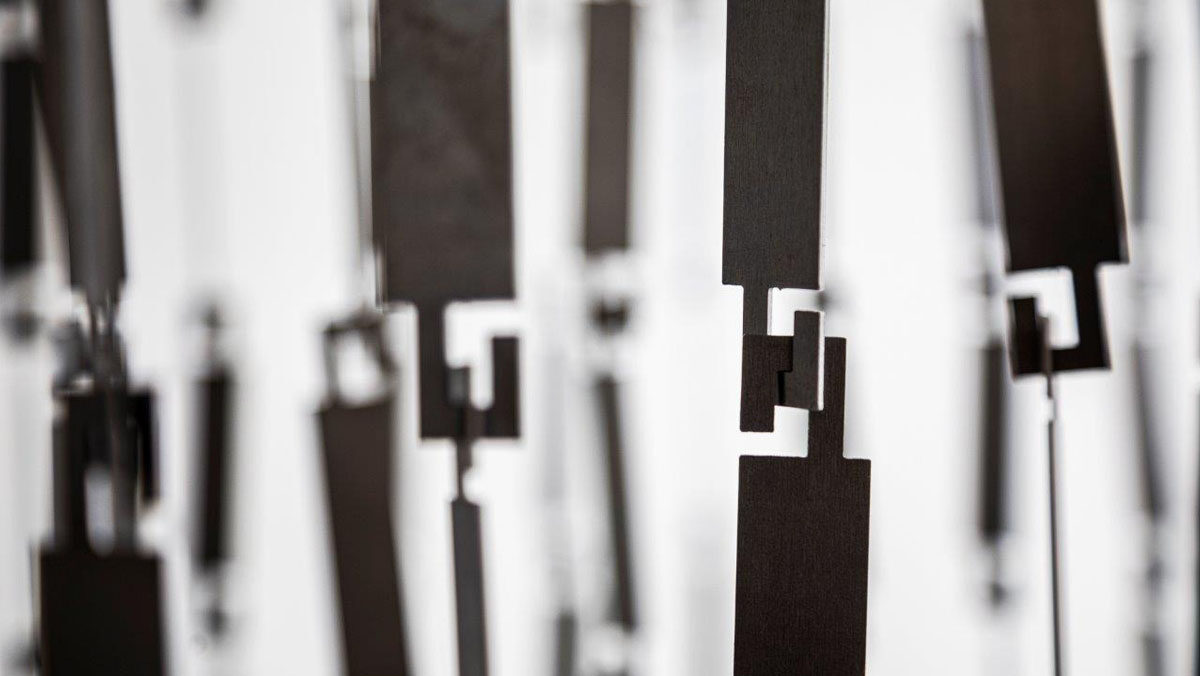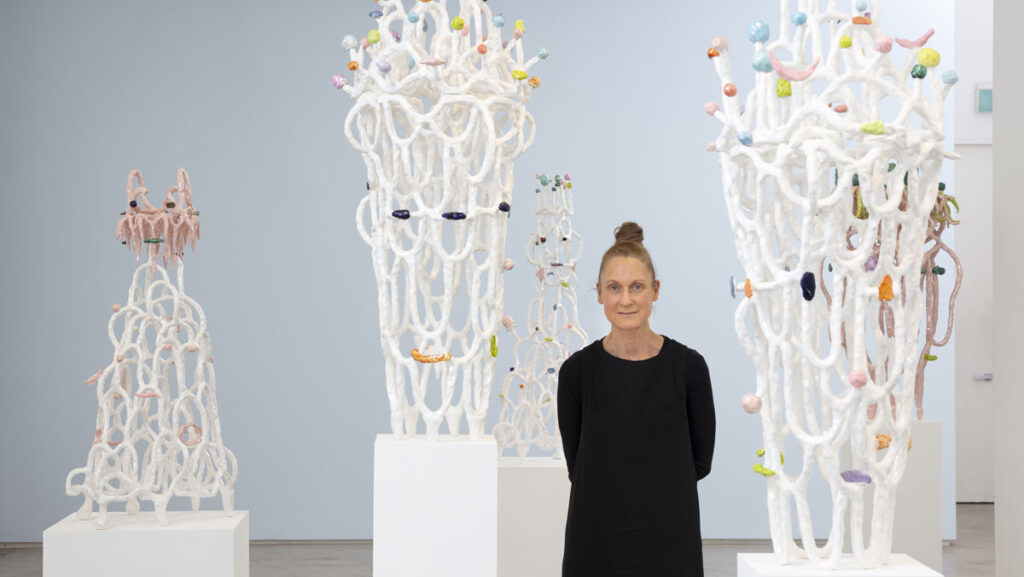Marko Marković was born in 1983 in Osijek, Croatia’s fourth largest city. Located in the historic region of Slavonia, Osijek is considered the nation’s breadbasket. The local population, their poverty and their difficult living conditions form a motif running through Marković’s work. The experience of the Yugoslav wars (1991 to 2001, in Croatia until 1995) and the post-war period have also strongly influenced Marković as an individual and as an artist. Today his art has greater relevance than ever. This is reflected in the distinctive actionist and performative character of his artistic practice as featured among the Sammlung Friedrichshof’s (Friedrichshof collection) exhibition activities.
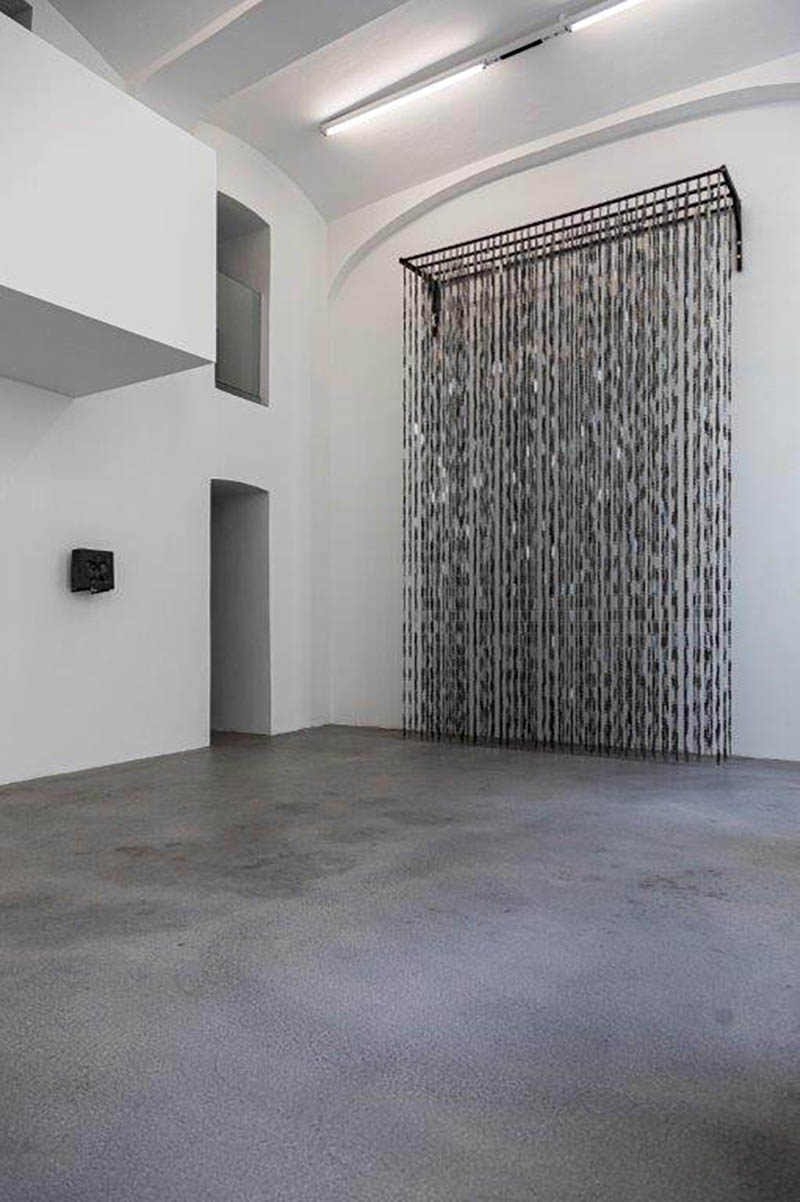
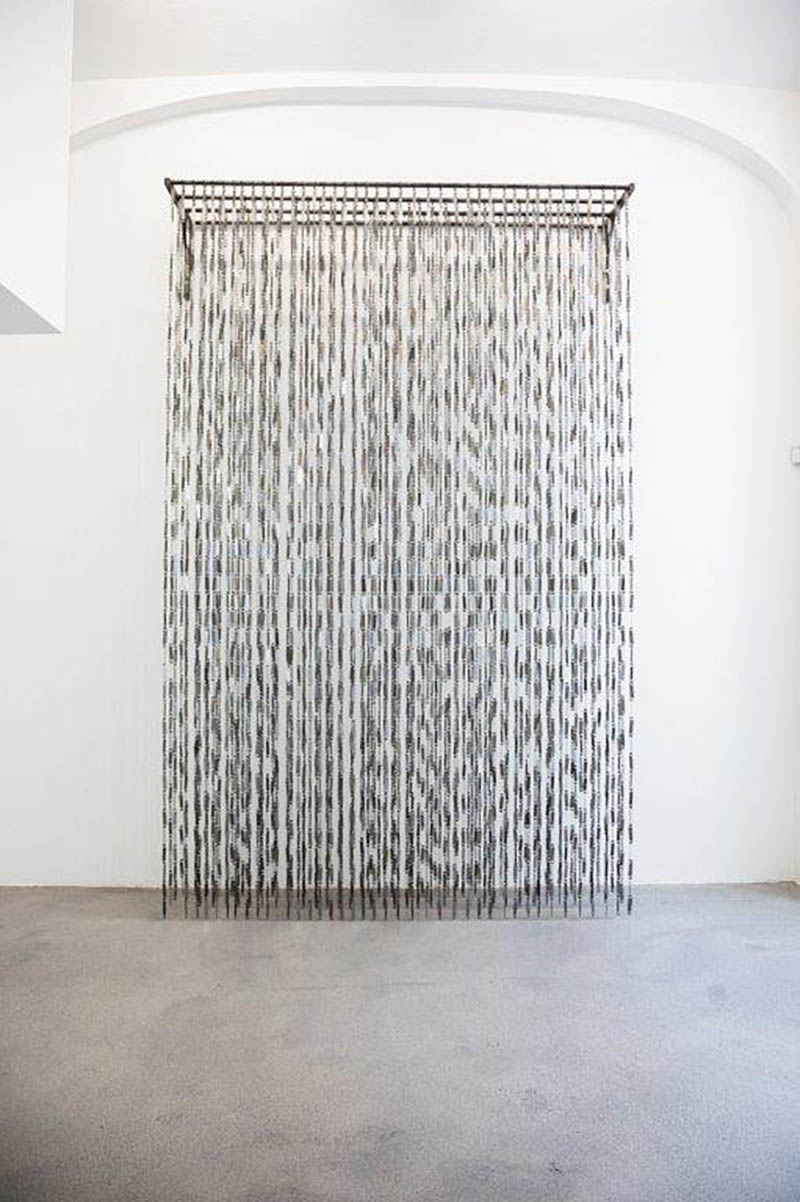
Marković enjoyed a visual arts education, studying painting at the Academy of Fine Arts in Split. But it was in his childhood, the artist says, that he learned to paint. Under his grandfather’s instruction, he drew an apple over and over again, for one whole year. This intensive, repetitive activity sharpened the artist’s powers of observation and concentration early on. His roots as a draughtsman and painter influenced the refined aesthetics of the diverse forms of expression which he later pursued – in special stagings of performances, drawing, photography, video/film, sculpture (including readymades) and installations, even music projects, with the musicians’ collective “Ausländer” for instance. Marković’s works constantly draw inspiration and strength from his own life experiences, both past and present, as well as the collective consciousness. He rejects pithy statements, preferring questions to clear-cut answers. There is always something enigmatic about his art works, something that resists straightforward interpretation.
Iron Waterfall (2022)
As mentioned above, this idea is linked to the concept of the Iron Curtain. This originally referred to a solid, structural fire protection system in places of assembly which separates the stage from the auditorium. However, the term acquired figurative meaning as early as World War One, before establishing itself as the ideological and physical border that separated Europe between the end of the Second World War and the peaceful revolutions of 1989. During this Cold War era, the world was divided between the Washington-aligned West and the Moscow-aligned East – spheres of influence of the two world powers that influenced the destiny of all humanity, as they continue to do today.
Following the rift between Tito and Stalin which arose in 1948, Yugoslavia ceased to be an Eastern Bloc state; from 1961 it was a leading member of the Non-Aligned Movement (NAM), a forum of countries not formally aligned with or against any major power bloc – a concept largely initiated by Tito. It was the only socialist country whose citizens were able to travel visa-free to Western Europe, North America, and other parts of the world – and vice versa.
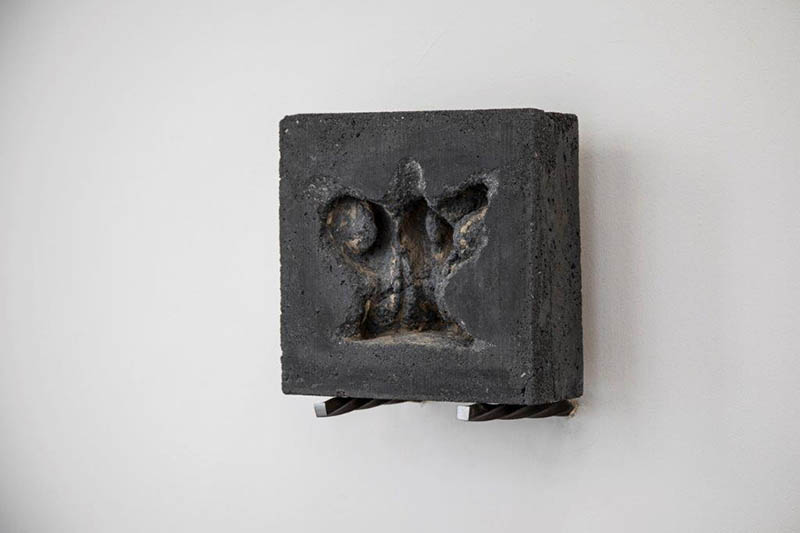
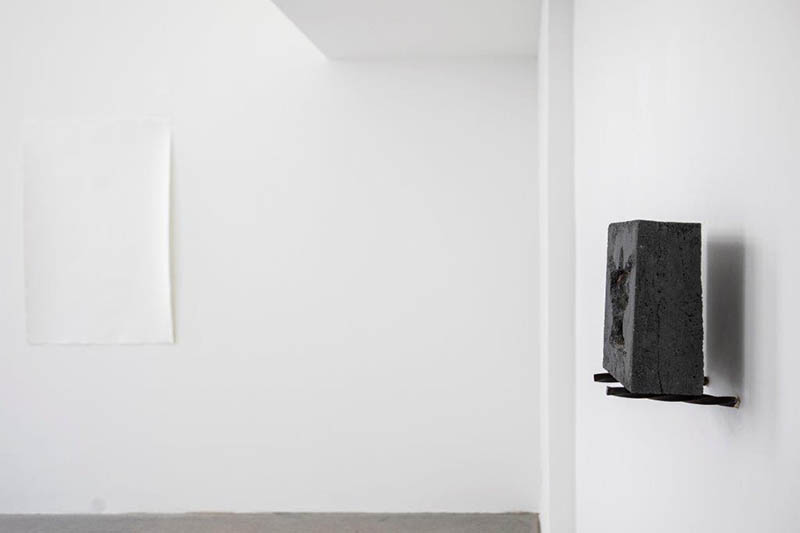
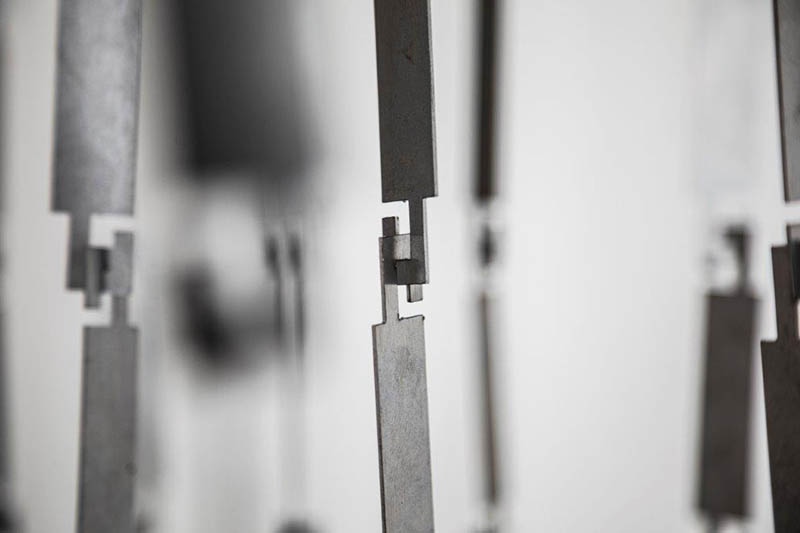

In this context, Marko Marković speaks of the “intermediate position” of his country, one he illustrates with his work Iron Waterfall, in which he establishes the idea of the waterfall on a conceptual level. Through the elements of fluidity and constant movement, he provides a metaphor for the constant change of the Iron Curtain over time – rising, falling, transitioning, ostensibly disappearing only to re-emerge in the present day.
The sculpture Iron Waterfall consists of flexible strands of several thousand iron leaves that Marković hung together in a performative action. Are they miniature shields that protect us like iron skin, or are they razor-like fragments of bombs that rain down and injure us in wartime? On closer inspection we can see that the sickle-shaped ends drop, linking to one another and suggesting the form of swastikas. The artist also makes reference to the Maeander of Greek antiquity, symbolising the origins of Western, Eurocentric culture.
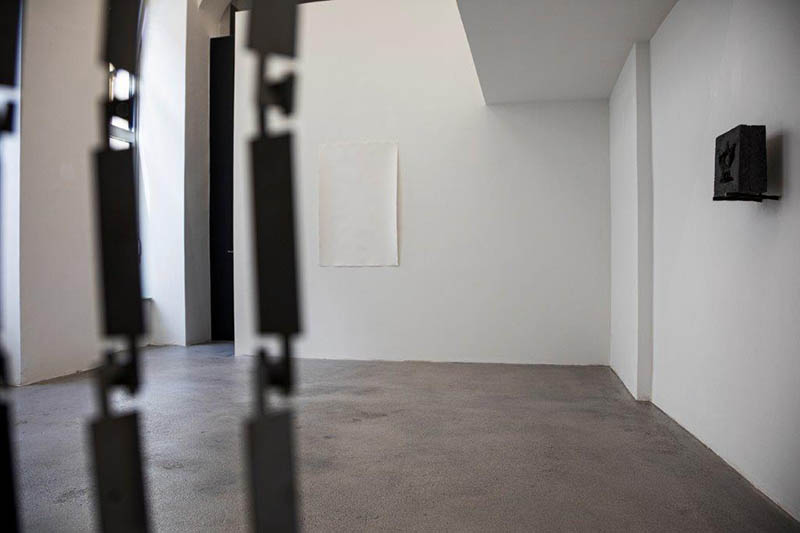
However, this “curtain” is not a partition, instead, it hangs like a monument on the high wall of the Sammlung Friedrichshof Stadtraum, with the vaulted space lending the artwork a sacred air. The countless leaves give the impression that they are flowing down an incline, like a waterfall.
It is precisely this ambivalence in the work – static and mobile, hard and soft, heavy and light, separate and permeable – that reflects a core element of Marković’s art and persona. With Iron Waterfall, Marković brings fragility to the form, creating the illusion of transparency in heavy materials such as iron. In this work, the artist reflects on power relations in general, and more specifically on the ambivalent “intermediate positions” of powerful societies. Transition political periods, the artist maintains, are significant in all the exhibition works. And they also reference Marković himself and his own ambivalent position between East and West, a continual, intrinsic, urgent question of identity. From his south-eastern European origins, his travels have taken him from one system to another for much of his life. The centre of his life is currently Vienna.
Stone Flower (2016)
First presented at the Venice Architecture Biennale in 2016, this work finds Marko Marković engaging with a period of historical trauma in his homeland. The Ustasha was a Croatian ultra-nationalist terrorist group that evolved into a fascist movement during World War Two. They set up an extermination camp in the Croatian region of Slavonia, Marković’s homeland, which is considered the “Auschwitz of the Balkans”. By 1945, tens of thousands of Serbs, Jews, Roma and anti-fascists had been imprisoned and executed at the camp. In the late 1950s, the renowned Yugoslav architect and sculptor Bogdan Bogdanović designed a memorial in a modernist style for the concentration camp victims on the site (Jasenovac), which was completed in 1966. A 24-metre high “flower” made of pre-stressed concrete and a small crypt below, where pools of water form when it rains, commemorates the victims. Marko Marković made a greatly reduced and relatively crude model of the Stone Flower out of clay and then cast the negative in cement. Remnants of the clay are still evident in the cavity of the sculpture. Once again, ambivalence is an important element in this work – hard and soft, heavy and light, as well as interior and exterior.
Marković opted for a negative image to symbolically emphasise the setting of the memorial monument, the site of the atrocities, a conscious rejection of the “monument culture” of post-war Croatia; the meaning of this tendency and the narratives associated with it change over the course of time according to the prevailing political system. Several of these Croatian monuments were destroyed in the 1990s.
Oblivion (2022)
Oblivion, a work on paper, is diametrically opposed to Iron Waterfall; closer inspection reveals faint marks inscribed into the paper by the artist (from the front? from the back?). They recall water or blood veins, or bronchial tubes, plant life or the fine cracks on oil paintings (craquelure).
Although Marko Marković allows space for free interpretation, the work evokes water or some other liquid. There is a tension between Oblivion and Iron Waterfall, but we should also remember that the word oblivion means “forgotten”, recalling the “Lethe”, the river of forgetting from Greek mythology. This context may bring to mind Heraclitus’s formula of panta rhei (everything flows) and his theory of flux which, all difficulties of interpretation aside, points to the principle of the world’s process quality: existence is not static, but in constant flux. It is worth noting that the following quote is also attributed to Heraclitus: “War is the father of all, king of all. He renders some gods, others men; he makes some slaves, others free.” Even without venturing further interpretation of this quote, the close link that Heraclitus establishes between change and war is striking.
Marko Marković’s work also carries associations of illusion and lies; at first sight this work on paper appears to be a large, blank, white sheet. He may be suggesting that the act of forgetting can manipulate the circumstances of past events. Perhaps he is even referring to the narratives of great powers, which are highly susceptible to exploitation, especially in times of war. Here, too, there are ambivalences, rendering a clear interpretation not just impossible but also undesirable.
Performance art forms the core of Marko Marković’s work. In a highly interesting 2016 interview with Srđan Sandić, the artist says: “Performance is a very difficult, complex medium, many people do not understand it, even performance artists have trouble understanding it. So they explore, question, test and practice performances, they don’t sleep and they break their necks. For me personally, it’s a never-ending race for something that appears unattainable, like an ideal or a vision that you seize, that flies away and that you have to keep chasing after. I began my research and experimentation in performance out of pure curiosity, so over time I went through different types of performance […]”
Marko Marković is interested in processes of transformation between the individual and society, in which he questions the relationship between inferiority and superiority in particular, and between power and powerlessness. He regards social and collective commitment, and rebellion, as vital elements. Beings that have been driven out of their natural environments, dwelling together in foreign countries under extreme living conditions, are linked by a common experience and their instinct for survival. When injustice occurs, it is the duty of a democratic society to react and intervene. In this respect, the artist believes, art can be a good “weapon”.
As an artistic researcher, Marko Marković is particularly concerned with the relationship between performer and audience, where the audience itself can become a performer in the space of the social network. Marković’s art is influenced by the desire to exist in different places at the same time, in parallel worlds, as it were. They merge with each other in the space of socio-political relationships, vague intimacies and concealed, invisible insincerities. As these worlds blend, they transform the perception and experience of what identity is or can be.
Marković also transfigures everyday actions in performance to distort our sense of reality. Influenced by some inner destructive impulse, he deconstructs the relationship to the body as a subject and explores his own physical and psychological limits as well as the audience’s limits of what is acceptable. No less important is his work with the concept of the “extended body”, within the technology available to us today. He deploys extremes of radical excess, which in certain aspects recall Viennese Actionism, yet go beyond them. Marković is also consistently drawn to provocation, using it to gain media exposure, to make a political impact and thus lend more weight to his protest actions.
Video recordings of the following three performances are on view in the upper part of the Stadtraum:
Work Saves (2010)
In this performance, Marko Marković sticks pins in his bare chest. These are pins bearing the logos of Croatian companies that have declared bankruptcy, some of them highly important businesses. The artist used this protest performance, which he carried out in various spaces in Split (public areas, galleries, festivals, etc.), to draw attention to grievances in his country.
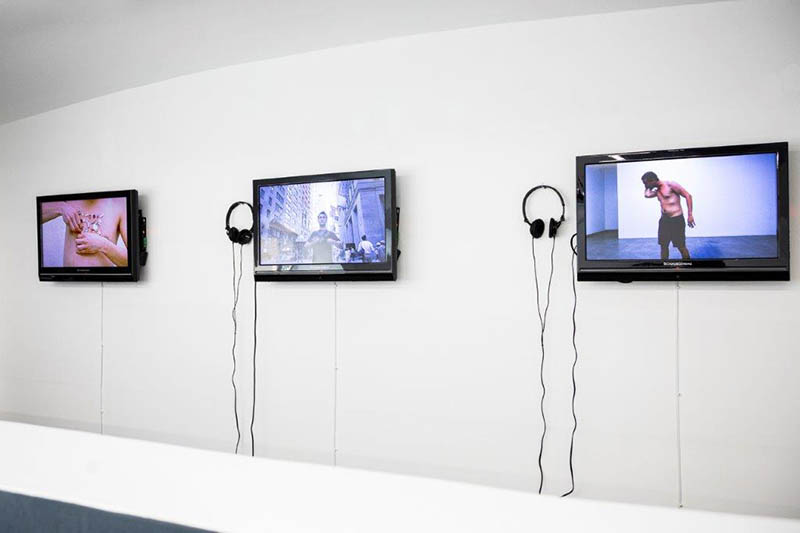
Sharpening (2012)
For this performance, carried out in New York City’s financial district, Marko Marković whetted two large kitchen knives against each other in the middle of the pavement. Prior to the performance, the artist applied to the city’s police department for a permit to carry a knife in the “Wall Street Security Zone”. In the wake of the Occupy Wall Street protests, pedestrians are strictly forbidden from even standing still in the security zone, which is ringed by police barricades. Through his performance, the weapon ceased to be a weapon, instead becoming an instrument for an artistic act. Nevertheless, the security personnel of some of the nearby banks and insurance companies tried unsuccessfully to halt the lawful action. And a police officer told the artist, “Watch your step because I have real bullets in my gun and I’ll be keeping an eye on you”.
While Marko Marković doesn’t do anything to his body in a direct sense during the performance, he still places it in danger. In so doing, he tests the security system of one of the most significant financial centres in the world. Despite the focussed, serious expression he adopts during the performance, he may also be making fun of his surroundings – in any case, the scene has something slapstick about it, eliciting a smile from some viewers. But it is also a work of protest, a symbolically threatening gesture that could be interpreted as a warning to the corrupt financial world.
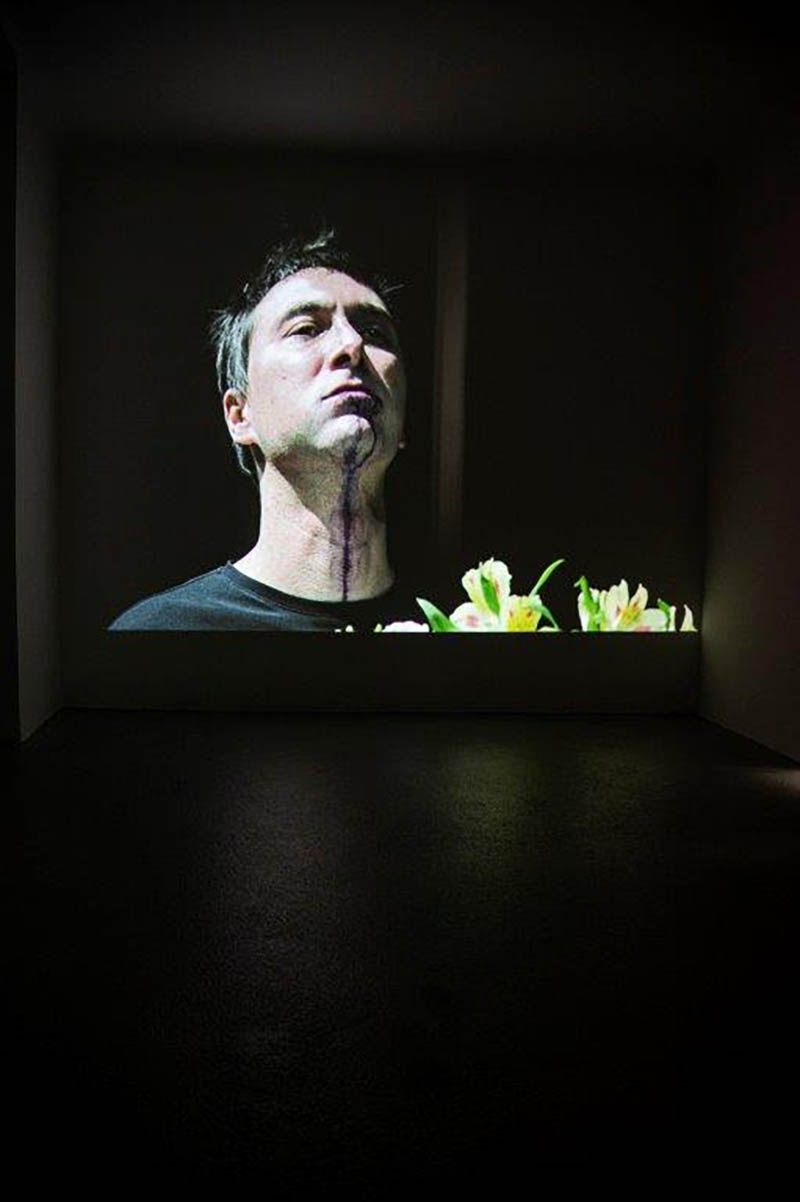
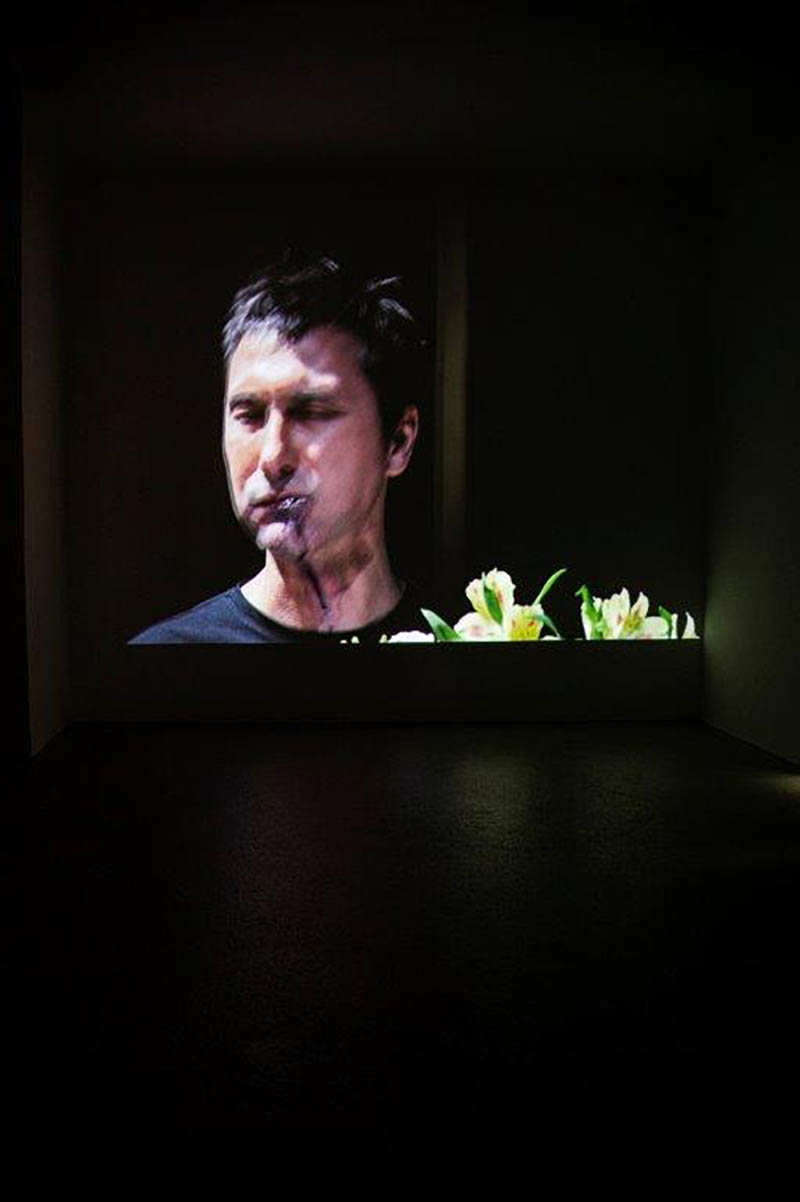
Selfeater / Injury at the work (2014)
Selfeater, a series of body art performances in which Marković consumed his own blood and flesh, arose between 2008 and 2009. Extreme body art techniques test the artist’s concentration and stamina, exploring the potential of one’s own body and ultimately arriving at the limits of the physically and mentally possible. This, again, was a protest in response to the social conditions in Marković’s country at the time. The work attracted vehement responses, with opinions ranging from positive to negative.
It is also worth noting that these performances and the scientific research conducted by Suzana Marjanić at the Institute of Ethnology and Folklore in Zagreb substantiated the terminology of autocannibalism. Marković’s work is in turn documented as a relevant contribution to the Croatian performance scene.
In the performance Selfeater / Injury at the work, which Marković presented in 2014 at the MMSU – Museum of Modern and Contemporary Art Rijeka, the artist bit himself. He then went to the hospital and tried, unsuccessfully, to claim his wounds as an occupational accident and receive social benefits. With this unique case, Marković aimed to put the Croatian health and social security system to the test and highlight the precarious position of artists.
Southeast sadness in Central Europe (2021)
In the smaller side room on the ground floor of the Stadtraum, Marko Marković presents the video of one of his most recent performances entitled Southeast sadness in Central Europe. It is a project that the artist has continued to develop over many years, culminating in 2021 in his hometown Osijek. In an environment which is staged theatrically, aesthetically and decoratively, Marković eats fragrant flowers. The saliva soon mixes with the red flower juice and the resulting liquid resembles blood, which begins to seep from his mouth. The ingestion of poisonous flower enzymes gradually induces nausea, causing the artist’s facial expression and overall posture to alter dramatically. Towards the end of the performance he makes guttural noises. Marko Marković is primarily interested in the responses that his performance causes in the viewer as “empathic resonance”, especially in the latter part of the performance, in which he is seized by vomiting fits.
Flowers are commonly perceived as beautiful. More precisely, in this case, the flowers are specimens cultivated for sale as dead, partly artificial goods; for Marković they symbolise manifestation of power. The action can also be interpreted as the consumption of artificial beauty, which is offered in abundance in our capitalist system but can also be lethal. Finally, the artist once again uses powerful images and disturbing sounds as a means of protesting against injustices in his country.
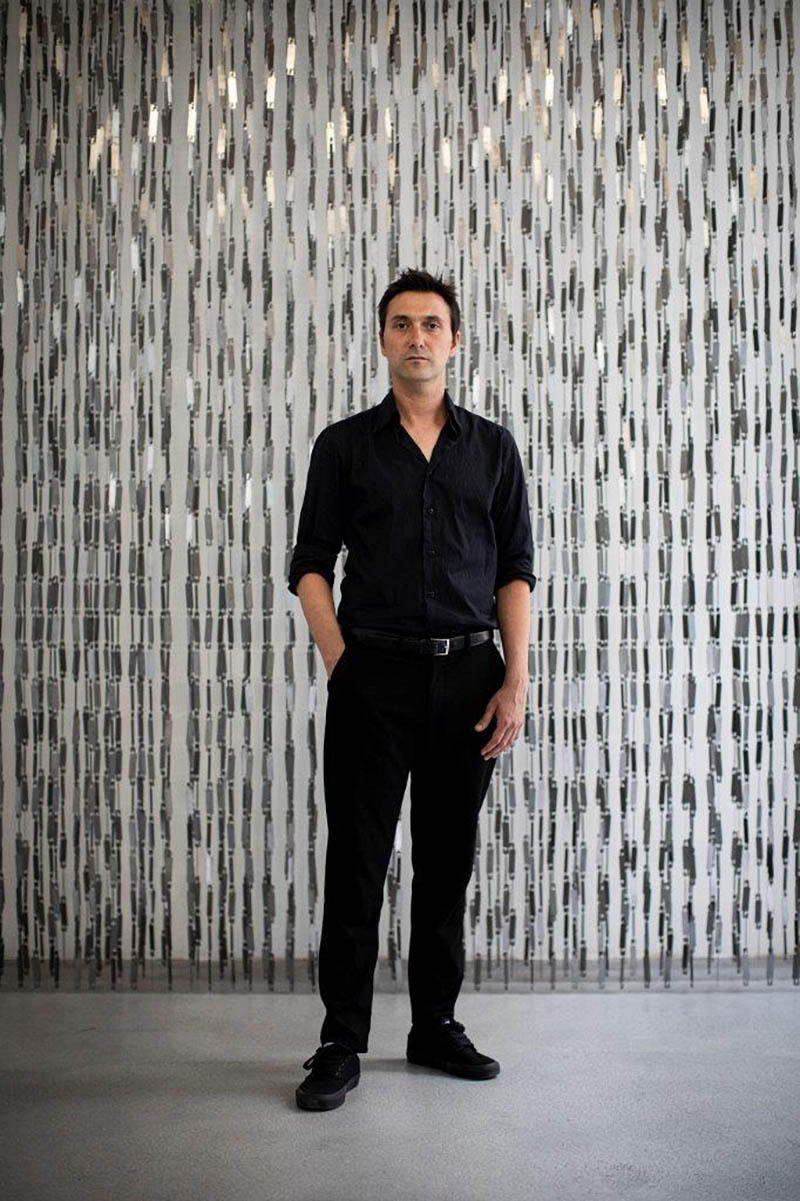
In October, Marko Marković and art historian Eva Badura-Triska will hold a talk, moderated by the curator of the exhibition, which will explore some of these aspects in greater detail. Between 1979 and 2019, Eva Badura-Triska was Curator at mumok – Museum of Modern Art Ludwig Foundation Vienna. One of the focal points of her research is Viennese Actionism.
Exhibition: Marko Marković – Iron Waterfall curated by Marcello Farabegoli
Exhibition duration: 22 June – 29 July & 6 September – 28 October 2022
Talk on 5 October at 6 p.m. in the Sammlung Friedrichshof Stadtraum between Marko Marković (artist) and Eva Badura-Triska (art historian and curator, formerly mumok) moderated by Marcello Farabegoli (Curator Sammlung Friedrichshof).
Address and contact:
Sammlung Friedrichshof Stadtraum
Schleifmühlgasse 6/11, 1040 Wien
www.sammlungfriedrichshof.at
Marko Marković graduated in Painting at the Academy of Fine Arts in Split and the pedagogical section of the University of Zadar. He also holds a master’s degree in Art & Science from the University of Applied Arts Vienna, returning later to work in the same department as the Programme Coordinator for the European Capital of Culture Rijeka 2020. He has been a guest lecturer at the UDK Berlin, at the IZK/Institute for Contemporary Art Graz, the Academy of Arts Zagreb and at the University of Applied Arts Vienna, as well as an independent curator in cooperation with MMSU – Museum of Modern and Contemporary Art Rijeka and mumok – Museum of Modern Art Foundation Ludwig Vienna. In 2022, Marko Marković presented his performance Southeast sadness in Central Europe at the Prague Biennale.
As an independent curator and artistic producer, Marko Marković focuses on cultural exchange with educational platforms in the field of performance art as part of the international performance festival DOPUST/Days of Open Performance (2008 to 2018, Croatia, USA and Austria). In 2011 he received the YVAA/Young Visual Artist Award. He has worked in art and film production as Project Coordinator at Matthew Barney’s studio in New York (2012-2014). In 2014, Marković held a major solo exhibition at MMSU – Museum of Modern and Contemporary Art Rijeka, and he has also presented his works at the 15th International Architecture Exhibition – La Biennale di Venezia (2016), at the International BiennaleMoscow (2016), and at the Biennale Sessions Giardini – La Biennale di Venezia (2019) and Prague Biennale (2022).




